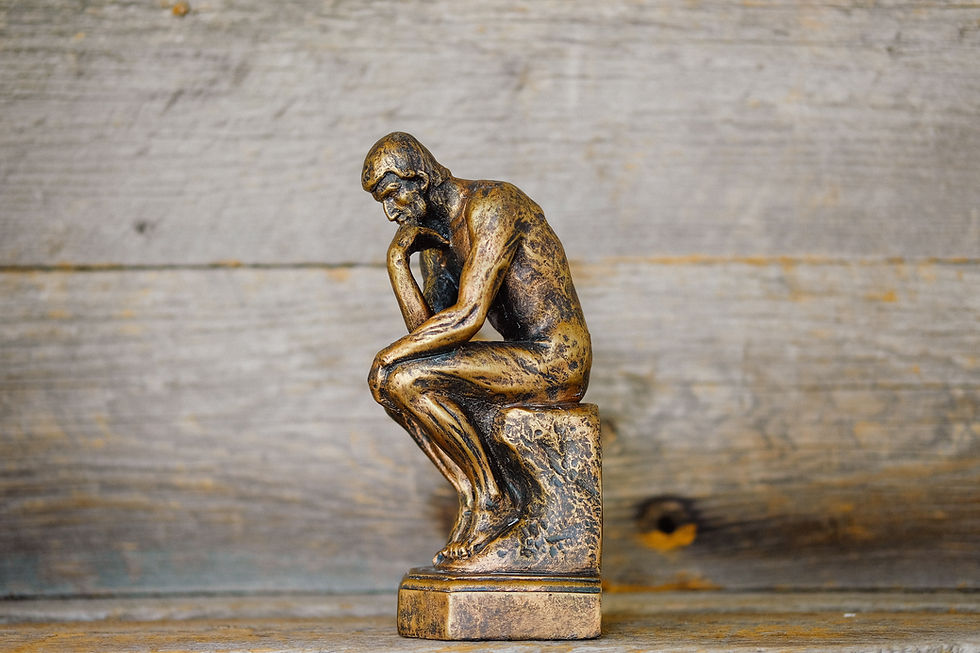There is no Wrong Way to Meditate
- Matthew Eitzman
- Mar 25, 2023
- 2 min read
Updated: Apr 16, 2023
One of the most common doubts while meditating is "Am I doing it right?"
To address this doubt, it is useful to remind ourselves of why we meditate in the first place. While there are many reasons to meditate, they all share a fundamental understanding: the relationship that we have with our minds is malleable. Despite being identified with our minds throughout our lives, we are not condemned to live this way forever.
We learn to change the relationship that we have with our minds through nonjudgmental awareness. As thoughts arise, we recognize them for what they are, without getting drawn into them. One thought need not lead to another. Through conscious awareness, thoughts dissipate.
Soon enough, though, more thoughts arise. The practice remains the same. Staying present, we recognize these new thoughts for what they are: just thoughts.
Completely stopping thoughts is very difficult, but that is not the goal of meditation in any case. Thoughts still arise, but, as described above, it is instead the relationship that we have with these thoughts that changes. This is the goal of meditation.
So, since the goal of meditation is not to stop thoughts completely but rather to develop a healthier relationship to the mind, does it make sense to say that one is practicing incorrectly? If many thoughts arise, this only breeds more opportunity for practice. As long as an attempt is made to observe the thoughts without judgment, there is no wrong way to meditate.
With that said, there are some practical steps often prescribed to improve the effectiveness of practice by increasing the likelihood of recognizing thoughts without getting pulled into them. For instance, it is almost always recommended to perform sitting meditation with a straight back. The recommendation is not set in stone, and if one were to abandon it, they would not necessarily be meditating "incorrectly". A straight back only helps insofar as it increases alertness, bringing one more fully into the practice. As opposed to practicing laying down, sitting upright makes one less prone to falling asleep, a common obstacle to meditation. Additionally, the ability to breathe deeply often aids concentration, and a straight back allows for air to flow more easily into the diaphragm. Thus, meditating in certain ways, like with a straight back, can predispose one to a more fruitful practice.
But any rules on "how to meditate" are amenable to change. If you are able to notice your thoughts with precise awareness while lounging on the couch, then, by all means, meditate in this way. While it usually helps to start in traditional postures that have been used for thousands of years, what matters in the end is finding what works for you. It is much more important to make a consistent effort towards practice that to find the one "correct" way to meditate — as the one "correct" way does not exist.




Comments